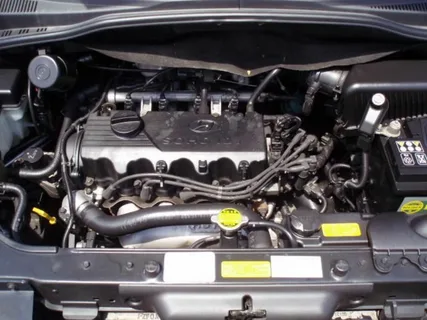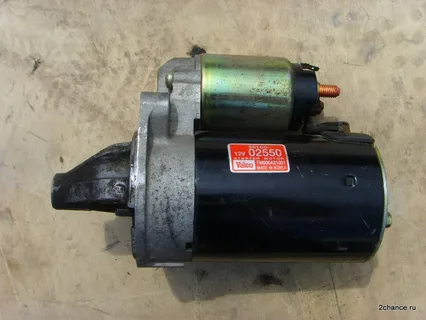Are you having trouble with the Hyundai Getz Tailgate Actuator in your car? Don’t worry – you’re not alone. The tailgate actuator is an important component of the vehicle, and understanding how it works can help you identify and solve common issues. In this blog post, we’ll take a look at what the Hyundai Tailgate Actuator does, how to troubleshoot common problems, and where to go for help if needed. With the right knowledge and tools, you’ll be able to get your car up and running in no time
What is a tailgate actuator?
The tailgate actuator is a vital component in your Hyundai Getz that controls the opening and closing of the tailgate. It is responsible for providing the mechanical force necessary to move the tailgate and ensure a secure closure.
Essentially, the tailgate actuator works by converting electrical signals from the key fob or the interior switch into mechanical motion. When you press the button to open or close the tailgate, the actuator receives the signal and engages a motor to initiate the movement. This motor is connected to a series of gears and linkages that transfer the rotational force into linear motion, ultimately causing the tailgate to move up or down.
In more technical terms, the tailgate actuator is an electrically powered linear actuator. It consists of a motor, gear train, and a screw or rod mechanism that converts rotary motion into linear motion. The actuator is controlled by an electronic module that receives input from the key fob or interior switch, and sends appropriate signals to the motor for the desired action.
Overall, the tailgate actuator plays a crucial role in the smooth operation of your Hyundai Getz’s tailgate. Understanding how it functions will help you diagnose any issues and ensure that your tailgate continues to operate efficiently.
Signs of a faulty tailgate actuator in your Hyundai Getz
Is your Hyundai Getz experiencing issues with the tailgate actuator? It’s essential to identify the signs of a faulty actuator to address the problem promptly. One of the most common signs is when your tailgate fails to open or close smoothly. You might notice that it takes longer than usual for the tailgate to respond to the button or key fob commands. Alternatively, the tailgate might get stuck in the open or closed position, refusing to move at all.
Another indication of a faulty actuator is unusual noises coming from the tailgate when you attempt to open or close it. If you hear grinding, clicking, or rattling sounds, it’s likely that there is a problem with the actuator or its components. Additionally, if the tailgate opens or closes partially or unevenly, it could be a sign of a faulty actuator.
DIY troubleshooting steps for a malfunctioning tailgate actuator
If you’re experiencing issues with your Hyundai tailgate actuator, there are a few DIY troubleshooting steps you can take to try and identify and potentially fix the problem. Here are some things you can try:
- Check the power supply: Start by ensuring that the tailgate actuator is receiving power. Check the fuse box for any blown fuses related to the tailgate actuator. If necessary, replace any blown fuses.
- Inspect the wiring: Look for any loose or damaged wires that may be affecting the actuator’s performance. Tighten any loose connections and replace any damaged wiring.
- Lubricate moving parts: Over time, the gears and linkages in the tailgate actuator can become dry and cause friction. Apply a lubricant specifically designed for automotive use to the moving parts of the actuator. This can help reduce any resistance and improve the overall performance.
- Reset the actuator: Some Hyundai Getz models have a reset button located near the actuator. Press and hold this button for a few seconds to reset the actuator and see if it resolves the issue.
- Test the actuator with a power source: If you suspect that the actuator itself is faulty, you can test it using a separate power source. Disconnect the actuator from the car’s electrical system and connect it to a 12-volt power source to see if it responds properly.
Common problems and solutions for the Hyundai tailgate actuator
The Hyundai Tailgate Actuator is a crucial component of your car, but like any mechanical part, it can experience problems. Here are some common issues that you may encounter with your tailgate actuator, along with their potential solutions:
- Slow or unresponsive movement: If your tailgate takes longer than usual to open or close, or doesn’t respond at all, there could be a problem with the actuator motor or electrical connections. Start by checking the wiring and connections for any loose or damaged parts. If everything looks fine, the motor may need to be replaced.
- Grinding or clicking noises: Strange noises coming from the tailgate when you try to operate it can indicate a worn-out actuator mechanism. This could be due to damaged gears or linkages. Lubricating the moving parts can sometimes help, but if the noise persists, you may need to replace the actuator.
- Partial or uneven movement: If your tailgate opens or closes partially or unevenly, it could be a sign of a faulty actuator or misaligned components. Inspect the actuator and its linkages for any damage or misalignment. Adjust or replace any faulty parts to ensure smooth and even movement.

How to Replace Your Hyundai Tailgate Actuator?
Replacing the tailgate actuator in your Hyundai Getz may seem like a daunting task, but with the right tools and instructions, it can be done. Here are the steps to follow:
- Gather the necessary tools: You will need a set of basic hand tools, such as a screwdriver, pliers, and a socket set. Additionally, you may need a trim panel removal tool and a multimeter to test electrical connections.
- Disconnect the electrical connections: Start by disconnecting the negative terminal of the car battery to prevent any electrical accidents. Then, locate the electrical connections that are attached to the tailgate actuator. Carefully disconnect them by removing any clips or screws holding them in place.
- Remove the actuator from the tailgate: The actuator is usually secured to the tailgate with a series of bolts or screws. Use the appropriate tools to remove these fasteners and detach the actuator from the tailgate. Take note of the orientation of the actuator and any additional components that may be attached.
- Install the new actuator: Position the new actuator in the same orientation as the old one. Secure it to the tailgate using the bolts or screws removed earlier. Make sure all the connections are properly aligned and tightened.
- Reconnect the electrical connections: Attach the electrical connections to the new actuator, following the same order and configuration as before. Double-check that all connections are secure and properly seated.
- Test the new actuator: Reconnect the negative terminal of the car battery and test the new actuator by using the key fob or interior switch to open and close the tailgate. Make sure it operates smoothly and without any issues.
- Reassemble the tailgate: If you had to remove any trim panels or other components during the replacement process, reattach them carefully. Ensure that all clips, screws, and fasteners are properly secured.
Preventive Measures to Keep your Tailgate Actuator in Good Condition
To ensure the longevity and optimal performance of your Hyundai Tailgate Actuator, it’s essential to take preventive measures. By following a few simple steps, you can keep your tailgate actuator in good condition and minimize the risk of future issues.
First and foremost, regular maintenance is key. Keep an eye on the actuator and its components, checking for any signs of wear, damage, or misalignment. Lubricate the moving parts regularly to reduce friction and ensure smooth operation.
It’s also important to be gentle when using the tailgate. Avoid slamming it shut or applying excessive force when opening or closing it. This can put unnecessary strain on the actuator and its mechanism, leading to premature wear.
Another preventive measure is to protect the tailgate actuator from harsh weather conditions. Exposure to extreme temperatures, moisture, and debris can damage the actuator’s electrical connections and components. Consider installing a tailgate cover or parking your car in a covered area to shield the actuator from the elements.
Finally, it’s a good idea to familiarize yourself with the owner’s manual and follow the manufacturer’s recommendations for maintenance and care. This will help you stay proactive in keeping your tailgate actuator in optimal condition.
FAQS
1. Q: How do I know if my tailgate actuator needs to be replaced?
A: Look out for signs like a slow or unresponsive tailgate, grinding or clicking noises, or partial and uneven movement. These are all indications that your actuator may be faulty and in need of replacement.
2. Q: Can I fix the tailgate actuator myself?
A: It depends on your level of expertise and comfort with car repairs. Some troubleshooting steps, like checking the power supply or inspecting the wiring, can be done by DIY enthusiasts. However, if you’re unsure or uncomfortable, it’s best to consult a professional to avoid any further damage.
3. Q: How much does it cost to replace a tailgate actuator?
A: The cost of replacing a tailgate actuator can vary depending on factors like the make and model of your car, as well as where you get the replacement part from. It’s best to check with a trusted mechanic or dealership for an accurate estimate.
Conclusion
In conclusion, understanding your Hyundai Tailgate Actuator is essential for troubleshooting and solving common problems. The tailgate actuator plays a crucial role in the smooth operation of your tailgate, controlling its opening and closing. By knowing how it works and being aware of the signs of a faulty actuator, you can address issues promptly and prevent further damage or inconvenience.



